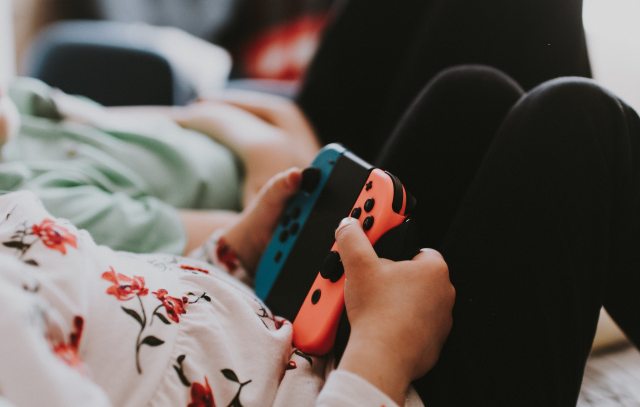The chances are high you’ve struggled to pull your child away from the screen or caught your kid scrolling on their phone late at night even when you set clear rules about no devices in bed. You’re so not alone. As parents, all of us are trying to help our kids navigate tech overload, but so often we feel we need to be supermoms and solve these problems on our own.
As the Director of Policy and Programs at the California Partners Project, a nonprofit ensuring California’s media and tech industries are a force for good in our children’s lives, I’m working to unpack how tech and social media are impacting families and creating a space for parents to be real with each other. Last fall, our team released a report Are the Kids Alright? to get a sense of how California teens were coping with the pandemic, and we found that tech has entertained and provided much-needed connection, but it has also sparked “addiction”, anxiety, loneliness, and disrupted sleep.
These problems aren’t going away anytime soon, so to get a better understanding of what families and kids are navigating, CPP and our co-founder California First Partner Jennifer Siebel Newsom launched a listening tour to hear from diverse caregivers about their pandemic parenting experiences.
I’m so grateful I got to join and lead conversations with dozens of moms, and I’m pretty amazed by how resilient we parents are. We’ve experienced so much trauma over the last year and a half and most parents (myself included) haven’t had meaningful opportunities to download and process our experiences and feelings. The struggle to manage life at home amidst isolation, screen saturation, and fear is real.
Parents told me that they haven’t been able to shield their kids from endless stressful news coverage, and others talked about how hard it is to create meaningful agreements around video games—especially when expectations are different between two parents. Many also shared that there is a dark side to popular apps they previously thought provided innocent entertainment. In one listening session, I heard about the growing anxiety and depression that children have experienced as the pandemic has worn on. “For us, there was so much anxiety because it was so unknown,” one mom said. “The kids wanted to go to school, they wanted to go to prom. Last year I had a 12th grader and she missed her prom, she missed her graduation and she was frustrated having to deal on a day to day and we were talking about putting her into counseling.”
After hearing parents echo common challenges, and discovering that so many of us feel we are in this alone, CPP created responsive toolkits with tips, recommendations, and best practices to help parents teach their kids how to practice healthy tech use. Our team talked to expert psychologists, pediatricians, educators, and other mental health providers to shape each toolkit with practical tips parents can use in their own homes. Check out some of the highlights, which I hope serve as a jumping off point for conversation and connection within your family:
How Can Parents Navigate Screen & Tech Saturation?
1. Discuss your approach to tech and media use with your co-parent or caregiver before you have difficult conversations.
Consider a family media agreement to begin a discussion with your child’s other parent (see Common Sense Media Family Media Agreement). These types of documents will help outline issues that might arise and provide an opportunity for discussion before you have to face the issue in real-time.
2. Create a family exercise challenge to get your kids off the screen.
Create a sit-up, push-up, or dance competition your family can do right in your own home. These simple exercises are practical ways to get stronger and more fit without equipment or classes (see Parents Together Family Challenge).
Don’t feel bad if your family has gone off-course with tech use. Acknowledge that some rules were suspended during a difficult year plus. Vicki Harrison, MSW and Program Director at the Center for Youth Mental Health and Wellbeing at Stanford University School of Medicine, recommends parents recognize that the last year was difficult and some unintended habits that got us through won’t continue as we recalibrate to a new and shifting reality.
3. If your child is feeling anxious about the news, set a plan to watch the news with them and/or discuss the content of the news of the day.
The APA recommends that parents set guidelines about what time of the day the family checks the news (APA). If your child is young, try to make sure the news is not on unless you or a trusted adult is monitoring what they are hearing and seeing. Ask your children what they think about the news and take time to listen to their response. Remind your children and teens to stick to trusted news sites to gather information.
If you’re looking for ways to manage your child’s devices, start with the settings. In most cases, according to research, if you want to begin to activate restrictions on devices or applications, whether for content or time limits, the best place to begin is settings. Platforms like Google (Digital Wellbeing) and Apple (Screen Time) have programs that allow you to put restrictions on your devices.
I know it will take time to help our children process the grief and loss they’ve experienced, but I am inspired that we can open up a dialogue and create space for parents to be honest with one another to help our children emerge from the pandemic healthy and whole.
—Laura Sanders Morris & California Partners Project
